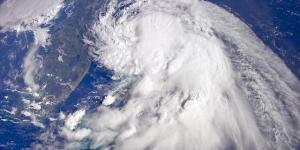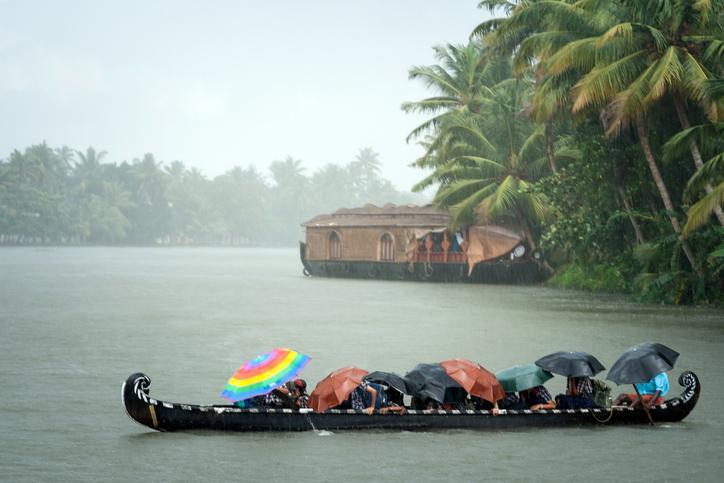Types of Monsoons and Their Effects


We may have heard of the monsoon season, the time during which wind and heavy rainfall can provide difficulties. For some of us, this means we need to reconsider travel plans. For many communities around the world, it means drastic changes and adaptations to their way of life. Fortunately, it also means that various ecosystems can be particularly abundant in plant and wild life. Areas of the world where monsoons occur often have some of the richest flora and fauna.
At thedailyECO, we discover more about how wind can change ecosystems with our article on the types of monsoons and their effects. We look at where and how they form to better understand this atmospheric phenomenon.
What are monsoons?
Although we often associate monsoon with rainfall, it is basically a seasonal wind. Monsoon winds are produced by the displacement of the tropical rain belt. The monsoon always flows from cold to warmer regions, causing drastic changes in the climate of these regions. Its character is evident in the etymology of the word, since it derives from mausim, which in Arabic means ‘season’.
When we talk about monsoons, we are mainly referring to those that occur in the southern part of Asia and the Indian Ocean. They can also occur in other areas with a tropical monsoon climate which creates these winds. One of the best-known effects of monsoons are the torrential rains that summer monsoons usually bring, but they are not the only type. In fact, not all monsoons bring heavy rainfall. Later we will talk about the main characteristics of the monsoons according to their two main types.
To learn more about how rainfall affects an ecosystem, take a look at our related article on what is a torrential downpour?

How monsoons form
Both land and sea have the ability to absorb heat from the sun. However, their physical properties are different. While sea water retains its temperature for longer, land warms and cools much faster.
When the temperature difference between land and sea is large, a pressure difference is created that ends up leading to the winds and precipitation associated with the monsoon. Since this pressure difference is caused by temperature, the season has a great impact on the formation and type of monsoon. This does not mean that monsoons only occur during the warmer months, as we explain below.
Types of monsoons and their characteristics
Now that you know better what monsoons are, let's delve into the types of monsoons and their characteristics. There is no single monsoon season, with the time differing according to place and other factors. However, we can say that monsoons usually occur during either summer or winter:
Summer monsoon
In the summer months, the land warms faster than the sea. When this happens, the pressure difference causes the ocean breeze to blow towards the land. This is because it is at a lower temperature.
When this happens, it causes the Earth's warm air to become charged with moisture brought by the ocean breeze. This rises to a high altitude and results in a local depression. The air then cools rapidly over the land itself instead of returning to the ocean. It will discharges its precipitation on the land, while the ocean breeze continues to bring in humid air and feeds the cycle.
This monsoon tends to start in India between March and June, and ends between September and November. Its dates vary depending on the specific climatic circumstances of each season, which can cause it to be more or less pronounced in some years. In some cases, the monsoon season may not even happen at all, something which may be affected by climate change.
Winter monsoon
The winter monsoon occurs in a very similar way to the summer monsoon, but in an inverse process. The land surface cools faster than ocean water. When this happens, the wind blows from land to sea. The rains in this case occur over the ocean, which tends to cause dry seasons on land, although this characteristic is not always present during winter monsoons.
The dry monsoon occurs in Asia approximately between October and April. Thanks to the influence of the Himalayas, its effects are less powerful than those of the summer monsoon.
Learn more about how mountains affect weather patterns with our article on what is a sea of clouds?
Places where have monsoon seasons
As we have said, the main monsoons occur in Asia, specifically in the Indian Ocean. This is not the only part of the world where monsoons occur. These are some of the places where there are monsoon seasons:
- The Asian monsoon affects areas further north, to countries such as China, the Philippines, Taiwan, Korea and Japan. In addition, the Asian-Australian monsoon also occurs, covering from the northern part of Australia to the Russian coast of the Pacific Ocean.
- In Africa there is the Western Sub-Saharan African monsoon, given by the system that the Sahara and the Atlantic Ocean create when they meet. Learn more about these arid reasons with our article on the different types of deserts.
- In North America, winds from the Gulf of Mexico and the Gulf of California cause a monsoon that begins in Mexico and then moves north through Arizona, New Mexico and Texas.

Effects of monsoons
The effects of monsoons vary according to their type. As a generalization, we can look at the different effects monsoons have on ecosystems:
- India and much of Southeast Asia benefit greatly from the summer monsoon. In fact, they largely depend on monsoons economically. Their agriculture and livestock is based on products such as cotton or rice. These crops are highly dependent on water, needing this large rainfall to develop properly.
- The increase in rainfall causes a large input of energy from hydroelectric plants. The high humidity also makes forest fires difficult, something which can benefit certain regions.
- Monsoons also have harmful effects, such as major floods. Landslides also frequently cause great damage to populations and crops. Learn more about the types of landslides and their impact.
- A weak monsoon will not bring enough rain for plantations to produce a good harvest nor will it provide plenty of grass for livestock, causing economic losses in the process. For this reason, it is important to know that monsoons are essential in various places, even if they can be devastating in others.
Different ecosystems are affected by weather phenomena differently, with monsoons being a good example of this. Read about the different types of climate and how they affect ecosystems to discover more.
If you want to read similar articles to Types of Monsoons and Their Effects, we recommend you visit our Meteorological phenomena category.







